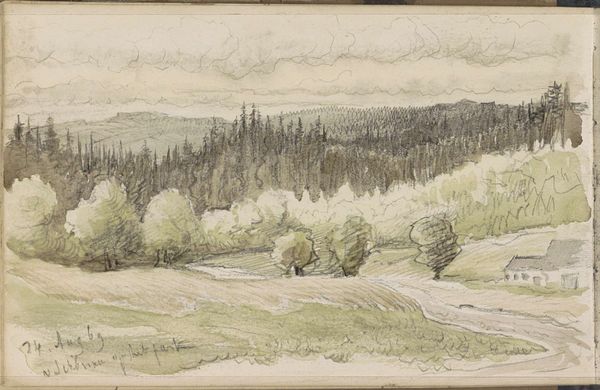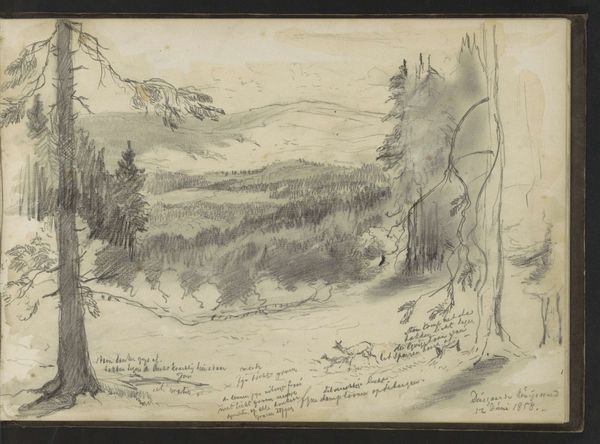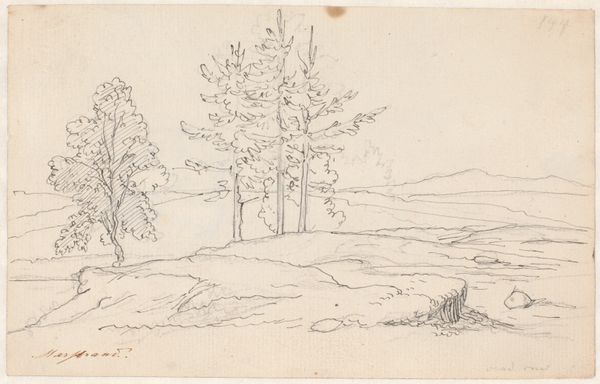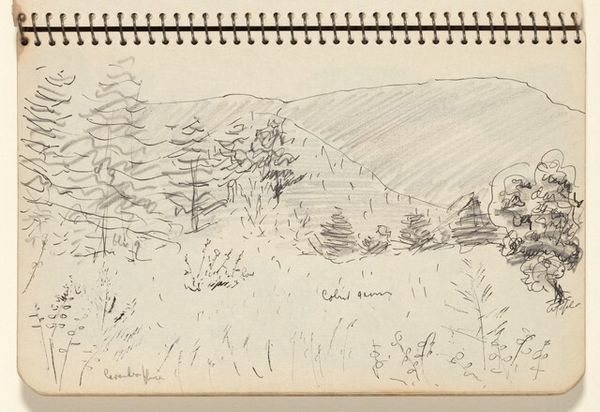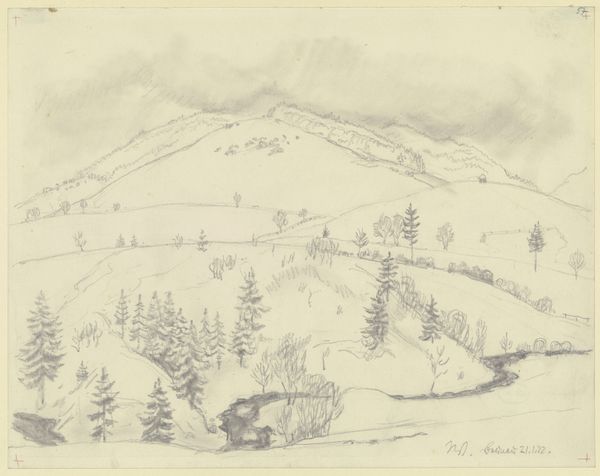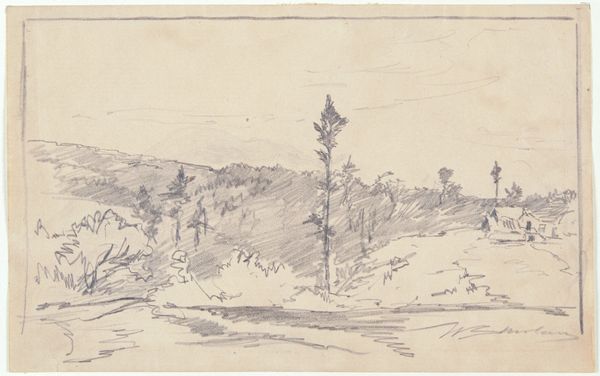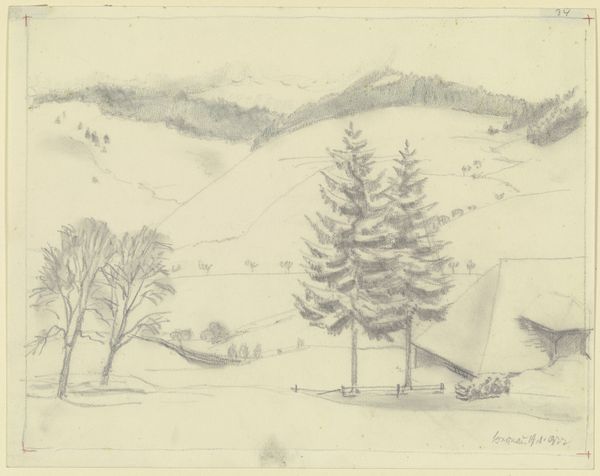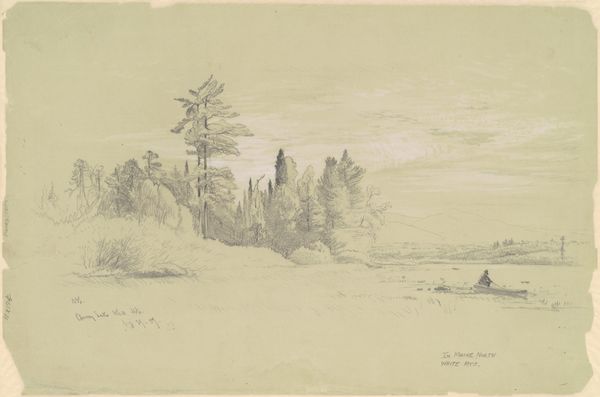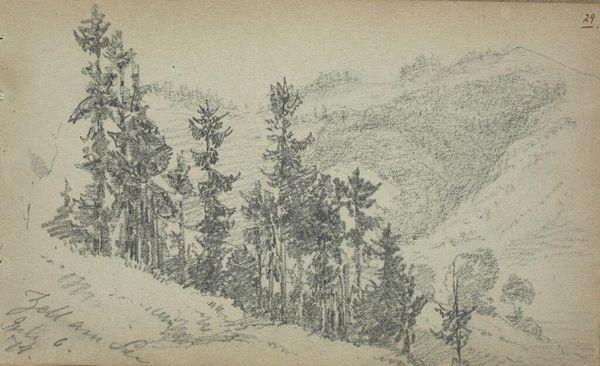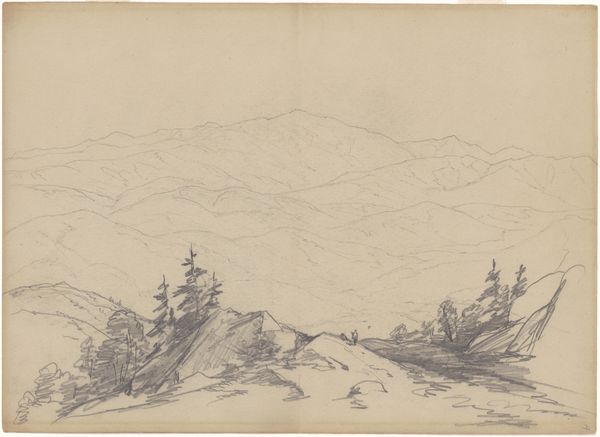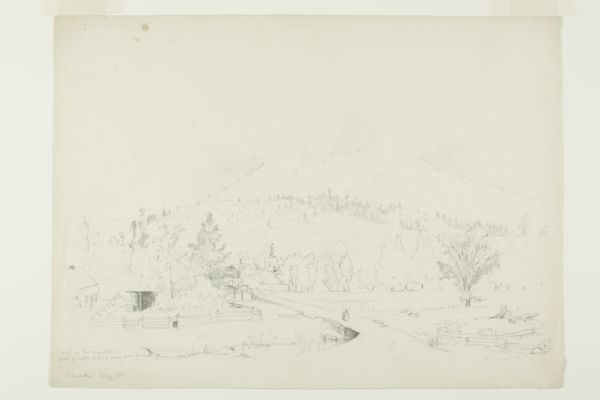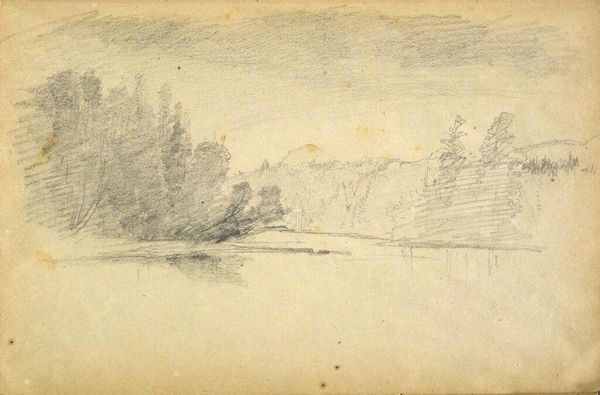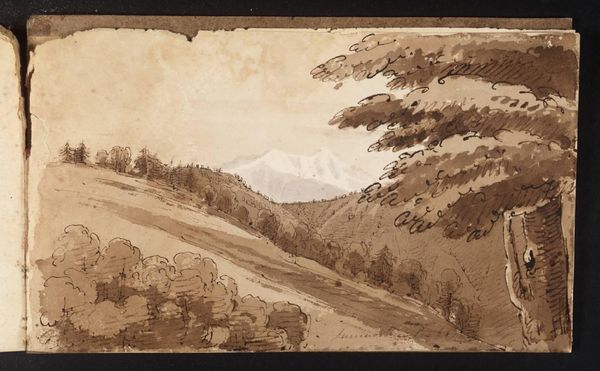
Copyright: Rijks Museum: Open Domain
Curator: Here we have Johannes Tavenraat's "Bos aan de voet van een berg," or "Forest at the Foot of a Mountain," created in 1869. It’s a delicate landscape study executed in ink and pencil on paper, currently held at the Rijksmuseum. Editor: It evokes a melancholic mood, wouldn’t you agree? The subdued palette and somewhat unsteady lines create a sense of transience and quiet observation. The high horizon line pushes down on the scene. Curator: The drawing's structure emphasizes this sentiment. The artist uses the formal qualities to articulate this experience of Romanticism. Notice how Tavenraat segments the picture plane. We start with a light foreground of a wooden fence giving way to a small, green plane of uncultivated land, dense treeline, and misty mountains looming large in the distance. Editor: And think of the artist working en plein air! What paper did he use? Where was this drawing made? What sort of pencil and ink allowed for this nuanced mark-making? This image opens a material history about the sketch itself: what was it used for, what kind of labor was involved in both its making, and its representation? Curator: It’s about pure representation through the skillful modulation of tone and line. The rapid, repetitive strokes he used to describe the leaves almost dematerialize the forest. This serves to explore formal artistic issues as well as achieve mimetic qualities. The material application works hand-in-hand with representing that idea, wouldn’t you say? Editor: Of course, they are not mutually exclusive but I am more drawn to the physical aspects. These are vital considerations because drawing mediates between nature and culture, but how? Where is the site? What culture shaped this landscape’s perception? I agree that these subdued colours render a dreamlike, abstracted world; I am just more interested in how it was materialized by the artist. Curator: I find Tavenraat has provided a nuanced, if compressed vision of the pastoral sublime. He skillfully deploys a limited tonal range and minimal detail to signify a grand, even awesome natural landscape, with its roots firmly grounded in the structures of romanticism. Editor: The real strength here lies in its very modesty. The pencil work gives that sketch-like appearance of material practice and also highlights the artistic labor needed to achieve atmospheric beauty on paper.
Comments
No comments
Be the first to comment and join the conversation on the ultimate creative platform.
